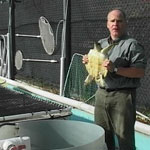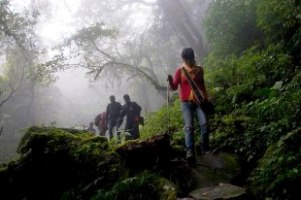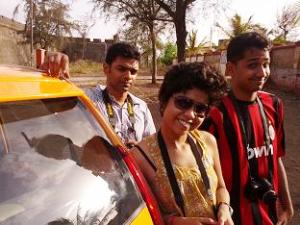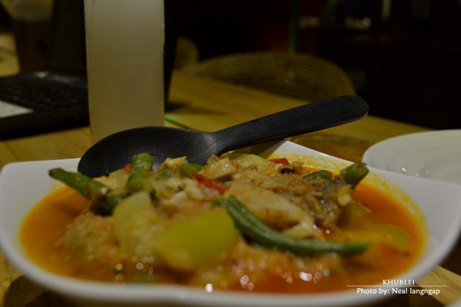Give me a fireplace, a shawl and a book to curl up with. Come winter and along with all the festivities and joy that it ushers in, there is one more reason for yours truly to look forward to - it leads the family to Assam’s Kaziranga National Park, famous for its one-horned rhino - a world heritage site, along the mighty river Brahmaputra, to the charming resort Wild Grass.
Cross the dusty township of Jorabat on National Highway 37 and the mood is upbeat. The silk smooth road lined by emerald green tea gardens on both sides rolls on and on… Amidst the Karbi hills and the golden paddy fields, alternated by lush green canopies of trees this is undoubtedly nature at her best. No wonder this drive has been rated as one of the top drives in India (by Autocar India). A song bursts forth on reaching the familiar Burrapahar hills near Kaziranga and the beautiful tea garden named after the hill where many a beautiful childhood holidays were spent with the uncle and aunt who owned the garden. Reach the Gajraj viewpoint and the rhino country begins. All heads stretch out to view any wildlife in sight.
On both sides of the highway covered by tall elephant grass and the swampy wetlands, herds of rhinos, wild buffaloes and elephants often come out to graze and enjoy the warmth of the sun. No such luck this time. It is nearing dusk; they must already be snug inside their abodes. I still remember the imposing sight of a huge lonely tusker on the road a few years ago. The thought of a rhino almost banging onto our car during a late night drive sends a shiver down my spine. At the same time the vulnerability of these endangered creatures stand out clearly. The great Indian one-horned rhinoceros carries its curse on its nose. Its biggest tragedy is to have been endowed with numerous magical and medicinal properties in the folklore of Asian countries especially in traditional Chinese medicine, where it is prescribed for everything from cancer to headaches and fever to aphrodisiac!
Zoom past Burrapahar as we near destination. The orange sun is almost vanishing under the horizon. Another half an hour or so and the familiar green post, the only landmark to Wild Grass so insignificantly placed will arrive. As a first timer one will never reach the resort at the first shot—take my word for it! All good things in life do not come easy seem to be the message here. The thick bamboo grove at the approach seems to welcome us back .The warm smile of the staff makes one feel at home at once. Check into our rooms, which look as tidy and cozy as we were here last. The earthy tones of the bed linen, the drapes, the wall hangings and the wooden floor along with the lush greenery outside complete the feeling of being one with nature.
The familiar beat of the Jhumur drum (a rhythmic folk dance of the tea tribe) resonates through the bamboo woods. We join in the show. With his toothy grin the stage manager is all set for the evening. Old man Masood Ali, who has been an inseparable part of this place since one remebers is busy making the evening comfortable. Amidst the bamboo outlined arena he places huge logs at different places for the bonfires, to cut down the crisp winter chill. Local village boys and girls give a superb presentation—for the convenience of the tourists, one amongst each group first explains in English the significance of that particular dance form and the instruments accompanying it. Little girls give a beautiful presentation of the Classical Sattriya dance. Next is a catchy traditional Assamese folk dance Bihu. A few foreign tourists join in. Jhumur with its melodious flute, rhythmic drum, and the attractive dusky girls in red and white sarees make a few more in the audience join in. Masood is in much demand –getting the fire going and clicked by groups of tourists, a few of whom give him a tip! It is a perfect picture of “Old Man and the Fire”.
Morning in Kaziranga is exhilarating. The sun is out nice and bright. The rest of the gang goes out for an elephant safari in the wilderness. Not so for me, this time. I would rather explore the wilderness around the resort. Hop out of bed with a refreshing cup of garden fresh Assam tea. There are very few places where I enjoy this taste and fresh aroma of almost home brewed tea. A quick shower and am out for stroll. It is a rendezvous of the featured kinds here. Their noisy chirpings provide the wake-up call in the mornings. Located at the junction of the Australasian and Indo-Asian flyway, Kaziranga becomes an abode for the many species of migrating, seasonal breeding and nesting birds. The 480 species of birds recorded in its vicinity includes around 25 globally threatened and 21 near threatened species. They are of various hues and shapes. Some sing a melodious tune, some are restless, some create a cacophony .The huge canopy of trees provide cozy shelters for them. Most of these trees are well labeled with their botanical names along with the colloquial Assamese ones. It would undoubtedly be a botanist and an ornithologist’s delight here.
Walk past the swimming pool and the Machan. The tiny souvenir shop underneath it opens and the man is busy neatly laying out the stuff—T-shirts, ashtrays, caps, and plates, all with the Kaziranga and Wildlife themes. Assam tea in attractive packaging is a hit with the foreign tourists. I check out the T-shirts for my sons but none seems to fit them. A huge group of visitors from the nearby tea garden arrives for a south Indian breakfast up at the tree house. I leave them to savor the fare. Backpacking foreigners in big groups are back from the elephant safari. They smile I smile back. All faces wear a look of amazement at the magnificence of the sanctuary. Every year we seem to notice more and more tourists flocking to this place from all over the globe as Kaziranga makes it mark even more distinctly in the world map.
Guests arrive at the dining hall to start afresh with a delicious breakfast. We join in and rush to grab seats in the sunny balcony overlooking the swimming pool. Puris, aloo dum (potato curry), an amazing array of pickles and spreads, scrambled eggs, golden crisp toasts and fresh orange juice to start the day! Next in agenda would be to burn some calories. The other option would be skipping lunch, which is near impossible. The badminton court under the huge amla trees looks inviting. Join in for a hearty game with the sons. They next move on to play table tennis while I gather amlas like the good old days.
Old Masood walks in and offers to take us for a stroll to the nearby tea garden. He leads, we follow. Amidst narrow winding paths, crossing the tea workers tiny huts we walk. That these womenfolk do a lot of hard work is evident. Apart from working in the garden plucking the legendary two leaves and a bud with their nimble fingers, they gather firewood, lay out the ripe paddy to sun, and manage the many kids they have. The neatness of their small dwellings is striking. The small patch of kitchen garden each one of them have, has a collection of fresh colorful winter vegetables. A few kids with runny noses get curious and follow us. It sure is invigorating to walk amidst the lush green tea bushes! I pluck a leaf, crush it and sniff. It smells of everything but tea! From here to the familiar cup and saucer must be a long journey indeed! The flower that this amazing tea bush bears and not many notice is beautiful too. I can sight the manager’s huge sprawling bungalow at one end. The nearby stream gurgles. The kids continue to follow .We offer them some candies and a smile bursts forth from each little face. Sit down at a particular spot and enjoy the serenity of the place. Masood gives us the tiniest details of all these nearby places full of interesting anecdotes. It is almost noon and time to return.
The dining hall is packed with the lunch crowd. Take our seats and a hearty meal of patot diya mas (fish steamed in bananaleaf ), masor tenga (sour fish curry) and pitika (mashed vegetables) follows. Assamese cuisine is something I will always rate as amongst the best in the world, call me biased I could not care less. The cooks here will do all justice to my claim! The cozy mezzanine library has a good collection of fictions, classics and coffee table books. I read about a brief history of Kaziranga. In 1985, UNESCO declared Kaziranga one of the five Natural World Heritage sites in India. It has the world’s largest population of one horned rhino, besides a good concentration of Royal Bengal tigers, wild buffaloes, swamp deers, Asiatic elephants and a lot more exotic species. It was Lady Curzon whose legendary love for the wildlife spurred the government to hear the cries of the wild especially that of the rhinos here. Mahi Chandra Miri was the first Indian officer appointed in Kaziranga whose contribution in saving the wild life here was immense. Padamshri Dr Robin Banerjee’s movie ”Kaziranga” telecasted from Berlin TV in 1961 gave Kaziranga an international fame. A lot more people have contributed, not to forget the many, often bare-footed, unsung heroes- the frontline staffs of Kaziranga national Park who work ceaselessly to preserve the legacy that is Kaziranga.
In the evening as we sit by the fire, there is a big excitement in the hall -- apparently a tiger had left its kill inside the park, which was sighted by a worker. The word spread around like wildfire. A tiger normally kills its prey and comes back the next day to relish it. The possibility of sighting the big cat or even the prey for that matter was making the adrenalin rush in most. Early the next morning, the boys and their father along with a lot of others, thickly wrapped up in woolens go out, all agog with excitement. The fog out side was making visibility almost nil. The chill was biting. After about two hours they return with dejected faces. The kill had vanished. The big cat would not obviously tolerate any intrusion into his privacy!
After two days of fun, food and frolic, we pack our bags and bid adieu to Kaziranga. Bid goodbye to Masood and the rest too. They pack me some pickle and some oranges. As we drive back home, the sun is out in its wintry best and there is not the slightest remnant of the early morning fog and mist. This time luck favors - we sight a lone rhino coming out to enjoy and bask in the morning sun…
Find us on facebook: facebook.com/TheThumbPrintMag







































